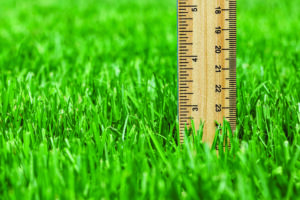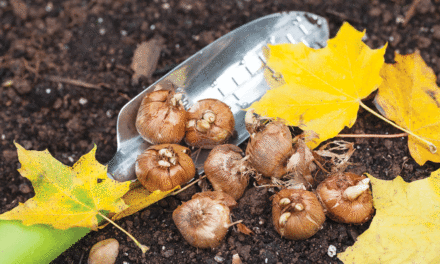
Never mow more than a third of the total height of your lawn, and remember to mow to a height of 2-3 inches high.
As July begins, so does picnic and outdoor entertainment time. Let’s talk about ways to keep your lawn and landscape looking good for summer entertaining as well as for your personal enjoyment.
Lets begin by discussing the proper way to water your lawn. Grass needs water every week, and it is good to do a slow soaking watering.
This allows the moisture to go deeper into the ground and helps the root systems to grow deeper, growing away from the heat and dryer upper surface.
A healthy lawn needs between an inch to an inch and a half of moisture each week. If it doesn’t rain you need to provide the moisture.
If your sprinkler doesn’t spray the water slowly consider watering a third of an inch of the needed moisture and then wait an hour or so to finish irrigating.
This will avoid run-off and still allow for a good soaking.
In our zone it’s a good idea to water in the morning between the hours of 5 and 10 a.m. to reduce evaporation and the possibility of scorching the lawn.
Remember grass that is consistently and deeply watered will develop deep roots and will be just fine during the heat and dry spells of summer.
A few more lawn care tips for this month include, never mow more than a third of the total height of your lawn, and remember to mow to a height of 2-3 inches high.
A University of Virginia study showed that by cutting your lawn higher, especially in the summer, you will have a lesser chance of weed germination and the grass develops a deeper root system, which helps during times of high heat and drought.
Remember only mow when the grass is dry, keeping the blades sharp.
Vary your cutting pattern, which makes it easier on the grass and use mulching blades to recycle the clippings and provides added nutrients for the lawn.
Japanese beetles will be coming out of the ground soon, and have enormous appetites.
They feed on cherry and plum trees, grapevine plants, crape myrtles, Japanese maples, roses and hibiscus.
If you choose to use traps, place them away from any of your desirable plants and be sure to install a new lure, as this is also their mating season and this is how the traps will be effective.
We also suggest using Bonide’s Yard and Garden Eight, which will kill them on contact and provide about two weeks of protection.
Two or more sprays, two weeks apart will take care of them for remainder of the season.
Deadhead flowering annuals and perennials as the blooms fade.
This is particularly important as many annuals and perennials that tend to spread by self-sowing, can take over the entire flower bed if left to seed.
Flowering annuals and many times flowering perennials will offer a second blooming period if you cut them back.
Deadheading also encourages healthier growth and better vigor of the plant. Be sure to water all newly planted trees, shrubs and perennials at least twice a week.
Water all gardens weekly if no rain is present.
As a general rule of thumb, most established trees and shrubs need an inch of water each week.
Finally, keep your vegetables harvested daily to keep them producing all season.
Keep the weeds out and look at least twice weekly for signs of insects, fungus and plant diseases.
Finding these problems early will only help in keeping them in check.
As always if you have a question, or have any plant problem, bring us a sample and we will be happy to help. Happy Summer!
(Editor’s Note: Ken Morgan is the owner of Robin’s Nest Floral and Garden Center in Easton, Md.)




